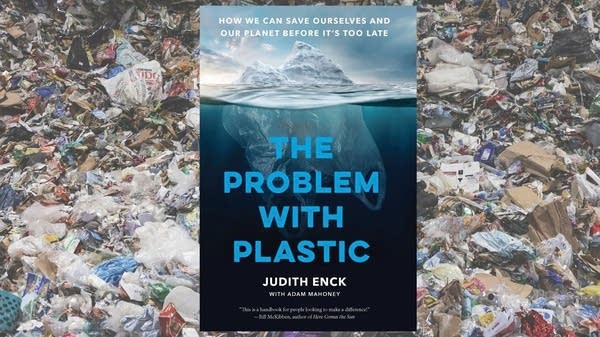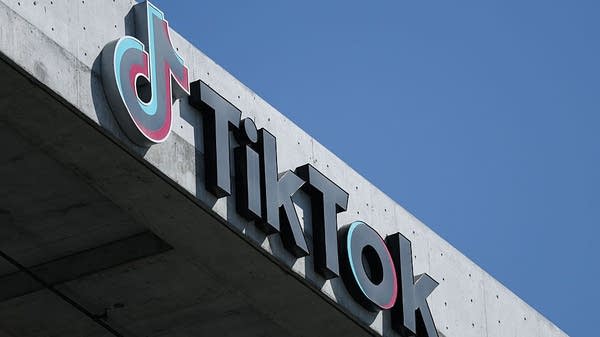Facial recognition startup Clearview AI could change privacy as we know it
In “Your Face Belongs to Us” New York Times journalist Kashmir Hill describes her examination of privacy in the digital era.

When New York Times reporter Kashmir Hill first got a tip in 2019 about a facial recognition startup, she found it hard to believe.
“I didn’t think it could be true,” Hill said. “It was this company, Clearview AI, that claimed to have scraped billions of photos from the public internet, without people’s consent, to build a database of something like a billion photos. And it was selling a facial recognition app to police that it said could identify somebody with something like 99% accuracy.”
Yet the tip did turn out to be true, at least in terms of how many faces it had collected. Today, the company has a database of 30 billion faces. And while it has run afoul of privacy regulations outside the U.S., Clearview AI hasn’t seen as much regulatory oversight domestically. In 2022, the startup settled a lawsuit with the American Civil Liberties Union after the latter alleged it violated an Illinois privacy law, and as part of the settlement, Clearview AI’s database cannot be accessed by private entities such as businesses and individuals. It is still widely used by law enforcement.
In her book, “Your Face Belongs to Us: A Secretive Startup’s Quest to End Privacy as We Know It,” Hill describes her reporting journey, including going inside Clearview AI itself and talking to its leaders. The following is an excerpt looking at the beginning of Hill’s investigation into the facial recognition company.
In November 2019, I had just become a reporter at The New York Times when I got a tip that seemed too outrageous to be true: A mysterious company called Clearview AI claimed it could identify just about anyone based only on a snapshot of their face.

I was in a hotel room in Switzerland, six months pregnant, when I got the email. It was the end of a long day and I was tired but the email gave me a jolt. My source had unearthed a legal memo marked “Privileged & Confidential” in which a lawyer for Clearview had said that the company had scraped billions of photos from the public web, including social media sites such as Facebook, Instagram, and LinkedIn, to create a revolutionary app. Give Clearview a photo of a random person on the street, and it would spit back all the places on the internet where it had spotted their face, potentially revealing not just their name but other personal details about their life. The company was selling this superpower to police departments around the country but trying to keep its existence a secret.
Not so long ago, automated facial recognition was a dystopian technology that most people associated only with science fiction novels or movies such as Minority Report. Engineers first sought to make it a reality in the 1960s, attempting to program an early computer to match someone’s portrait to a larger database of people’s faces. In the early 2000s, police began experimenting with it to search mug shot databases for the faces of unknown criminal suspects. But the technology had largely proved disappointing. Its performance varied across race, gender, and age, and even state-of-the-art algorithms struggled to do something as simple as matching a mug shot to a grainy ATM surveillance still. Clearview claimed to be different, touting a “98.6 percent accuracy rate” and an enormous collection of photos unlike anything the police had used before.
This is huge if true, I thought as I read and reread the Clearview memo that had never been meant to be public. I had been covering privacy, and its steady erosion, for more than a decade. I often describe my beat as “the looming tech dystopia—and how we can try to avoid it,” but I’d never seen such an audacious attack on anonymity before.
Privacy, a word that is notoriously hard to define, was most famously described in a Harvard Law Review article in 1890 as “the right to be let alone.” The two lawyers who wrote the article, Samuel D. Warren, Jr., and Louis D. Brandeis, called for the right to privacy to be protected by law, along with those other rights—to life, liberty, and private property—that had already been enshrined. They were inspired by a then-novel technology—the portable Eastman Kodak film camera, invented in 1888, which made it possible to take a camera outside a studio for “instant” photos of daily life—as well as by people like me, a meddlesome member of the press.
“Instantaneous photographs and newspaper enterprise have invaded the sacred precincts of private and domestic life,” wrote Warren and Brandeis, “and numerous mechanical devices threaten to make good the prediction that ‘what is whispered in the closet shall be proclaimed from the house-tops.’ ”
This article is among the most famous legal essays ever written, and Louis Brandeis went on to join the Supreme Court. Yet privacy never got the kind of protection Warren and Brandeis said that it deserved. More than a century later, there is still no overarching law guaranteeing Americans control over what photos are taken of them, what is written about them, or what is done with their personal data. Meanwhile, companies based in the United States—and other countries with weak privacy laws—are creating ever more powerful and invasive technologies.
Facial recognition had been on my radar for a while. Throughout my career, at places such as Forbes and Gizmodo, I had covered major new offerings from billion-dollar companies: Facebook automatically tagging your friends in photos; Apple and Google letting people look at their phones to unlock them; digital billboards from Microsoft and Intel with cameras that detected age and gender to show passersby appropriate ads.
I had written about the way this sometimes clunky and error-prone technology excited law enforcement and industry but terrified privacy-conscious citizens. As I digested what Clearview claimed it could do, I thought back to a federal workshop I’d attended years earlier in Washington, D.C., where industry representatives, government officials, and privacy advocates had sat down to hammer out the rules of the road. The one thing they all agreed on was that no one should roll out an application to identify strangers. It was too dangerous, they said. A weirdo at a bar could snap your photo and within seconds know who your friends were and where you lived. It could be used to identify antigovernment protesters or women who walked into Planned Parenthood clinics. It would be a weapon for harassment and intimidation. Accurate facial recognition, on the scale of hundreds of millions or billions of people, was the third rail of the technology. And now Clearview, an unknown player in the field, claimed to have built it.
I was skeptical. Startups are notorious for making grandiose claims that turn out to be snake oil. Even Steve Jobs famously faked the capabilities of the original iPhone when he first revealed it onstage in 2007. We tend to believe that computers have almost magical powers, that they can figure out the solution to any problem and, with enough data, eventually solve it better than humans can. So investors, customers, and the public can be tricked by outrageous claims and some digital sleight of hand by companies that aspire to do something great but aren’t quite there yet.
But in this confidential legal memo, Clearview’s high-profile lawyer, Paul Clement, who had been the solicitor general of the United States under President George W. Bush, claimed to have tried out the product with attorneys at his firm and “found that it returns fast and accurate search results.” Clement wrote that more than two hundred law enforcement agencies were already using the tool and that he’d determined that they “do not violate the federal Constitution or relevant existing state biometric and privacy laws when using Clearview for its intended purpose.” Not only were hundreds of police departments using this tech in secret, but the company had hired a fancy lawyer to reassure officers that they weren’t committing a crime by doing so.
I returned to New York with an impending birth as a deadline. I had three months to get to the bottom of this story, and the deeper I dug, the stranger it got.
Excerpted from “Your Face Belongs to Us” by Kashmir Hill Copyright © 2023 by Kashmir Hill. Excerpted by permission of Random House. All rights reserved. No part of this excerpt may be reproduced or reprinted without permission in writing from the publisher.













